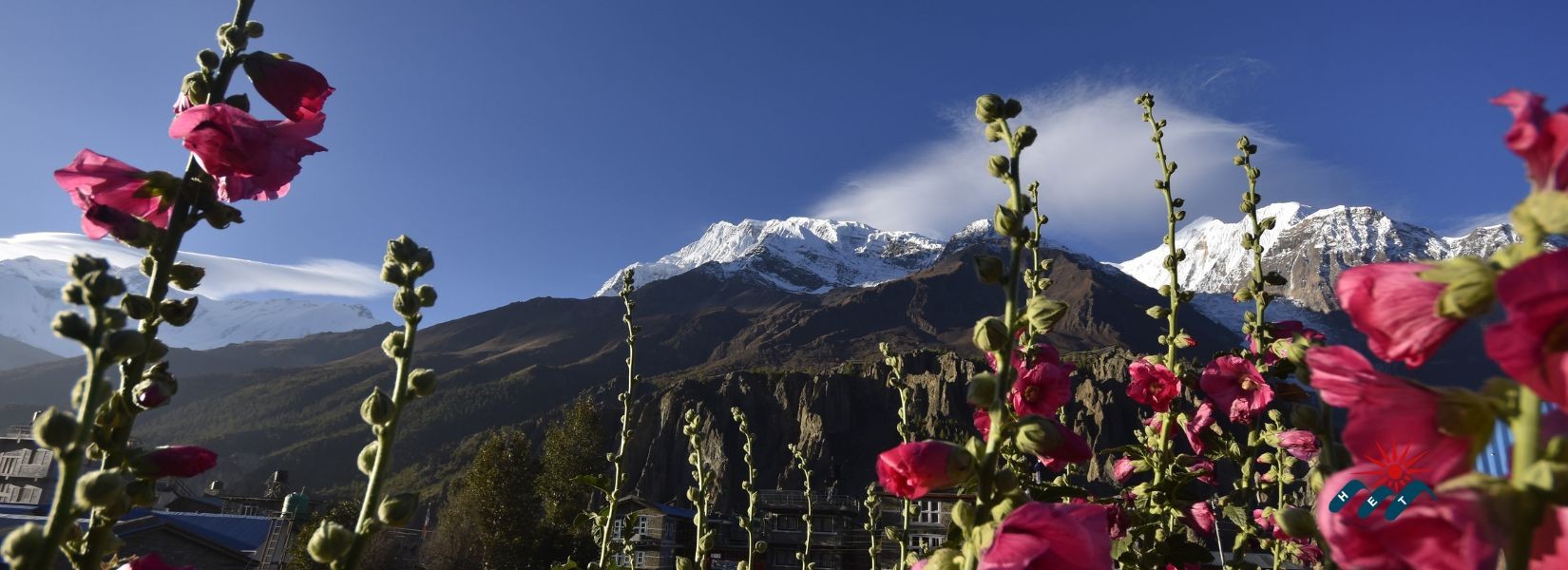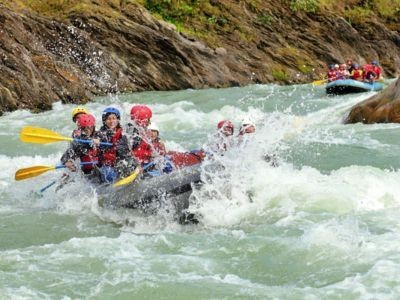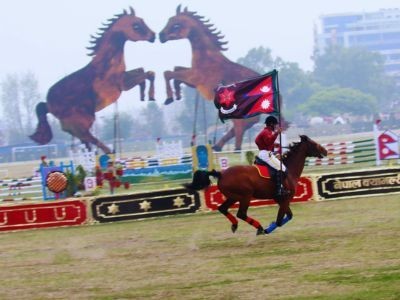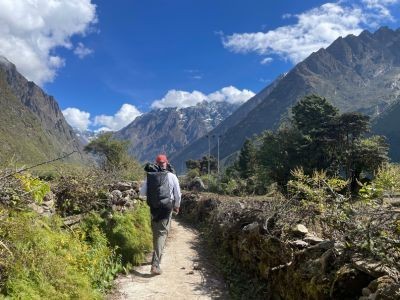The Annapurna Circuit trek during autumn months (September to November) offers what many consider the pinnacle of Himalayan trekking experiences. This golden season combines optimal weather conditions, spectacular mountain vistas, and rich cultural encounters to create what seasoned trekkers unanimously agree is the best possible version of this legendary journey.
As the monsoon rains retreat in early September, they leave behind a transformed landscape - vibrant with fresh greenery, swollen waterfalls, and clear skies that reveal the snow-capped giants in all their glory. The air carries that crisp, invigorating quality unique to post-monsoon Himalaya, while daytime temperatures remain comfortable for trekking and nights turn refreshingly cool.
What truly sets autumn apart is how it enhances every aspect of the Annapurna Circuit experience:
Nature's spectacle: Forests transition through autumn colors, from lush greens to golden yellows and fiery reds
Cultural richness: Coincides with Nepal's most important festivals - Dashain and Tihar
Ideal trekking conditions: Stable weather patterns with minimal precipitation
Photographic perfection: Crystal-clear visibility and dramatic lighting conditions
Sustainable tourism: Lower environmental impact compared to monsoon or winter seasons
This comprehensive guide will take you through every facet of experiencing the Annapurna Circuit during its prime season, with detailed month-by-month breakdowns, insider tips on hidden routes, and expert advice to maximize your trekking experience.
Annapurna Circuit Trek in September: The Gentle Beginning of Autumn
Weather Patterns and What to Expect
September marks the transition period between monsoon and proper autumn. The early part of the month may still see occasional showers, particularly in the lower elevations, but these become increasingly rare as the month progresses. By mid-September, you'll typically enjoy:
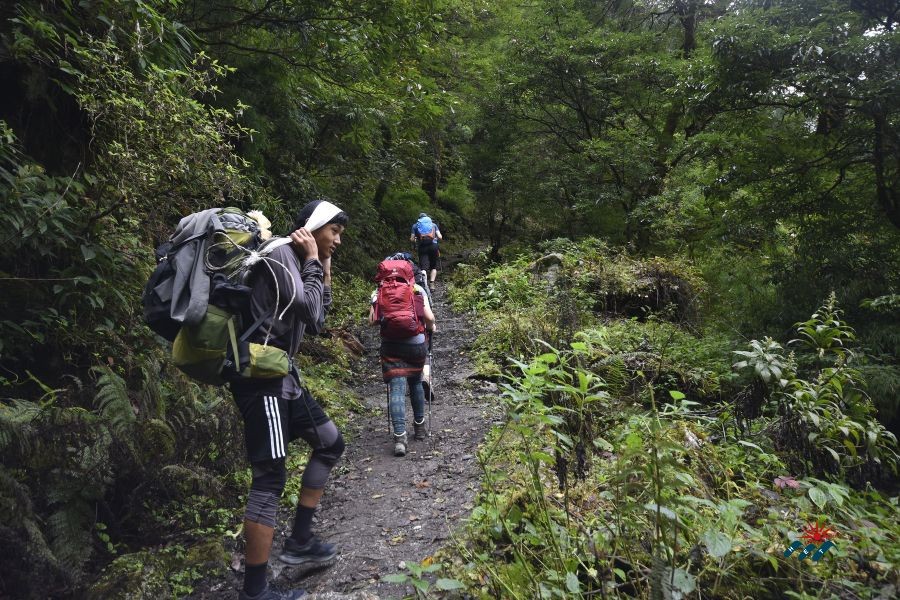
Daytime temperatures: 15-20°C in lower elevations (Besisahar, Chamje)
Nighttime temperatures: 5-10°C in mid-elevations (Chame, Pisang)
High altitude conditions: Near freezing at Manang (3,500m), with Thorong La Pass experiencing sub-zero nights
The humidity drops significantly compared to August, making trekking much more comfortable. Morning mists often burn off by mid-morning, revealing stunning views of the Annapurna massif.
Trail Conditions and Natural Beauty
Post-monsoon September offers some of the most vibrant landscapes you'll encounter:
Waterfalls at their peak: The monsoon-fed cascades like the dramatic one near Bahundanda are particularly impressive
Lush vegetation: Terraced fields glow emerald green, forests are thick with foliage
Wildflowers: Numerous species bloom in the alpine meadows above Manang
Clear rivers: The Marsyangdi River runs full and turquoise from glacial melt
The trails are firm but not dusty yet, providing excellent footing. Some lower sections may have residual mud, but nothing compared to monsoon conditions.
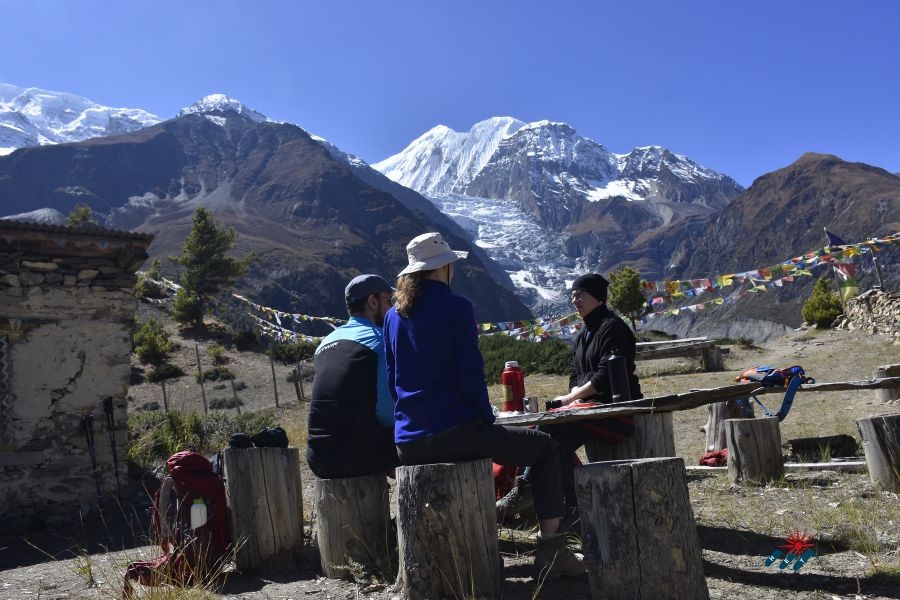
Cultural Highlights and Local Life
September offers unique cultural insights as villages transition from monsoon to harvest season:
Pre-Dashain preparations: Observe villagers preparing for Nepal's biggest festival
Agricultural activities: Participate in or watch the rice harvest in lower elevations
Fewer tourists: Enjoy more authentic interactions with local communities
Why Choose September?
Avoid the October crowds while still getting excellent weather
Experience the landscape at its most lush
Witness unique seasonal transitions in both nature and culture
Better deals on teahouses and services before peak season prices kick in
Annapurna Circuit Trek in October: The Golden Month of Annapurna Trekking
Weather Perfection
October is when the Annapurna Circuit reaches its meteorological sweet spot:
Daytime highs: 12-18°C at trekking elevations
Nighttime lows: 0-5°C in villages, -5 to -10°C at high passes
Rainfall: Virtually nonexistent
Visibility: Consistently clear with unlimited mountain views
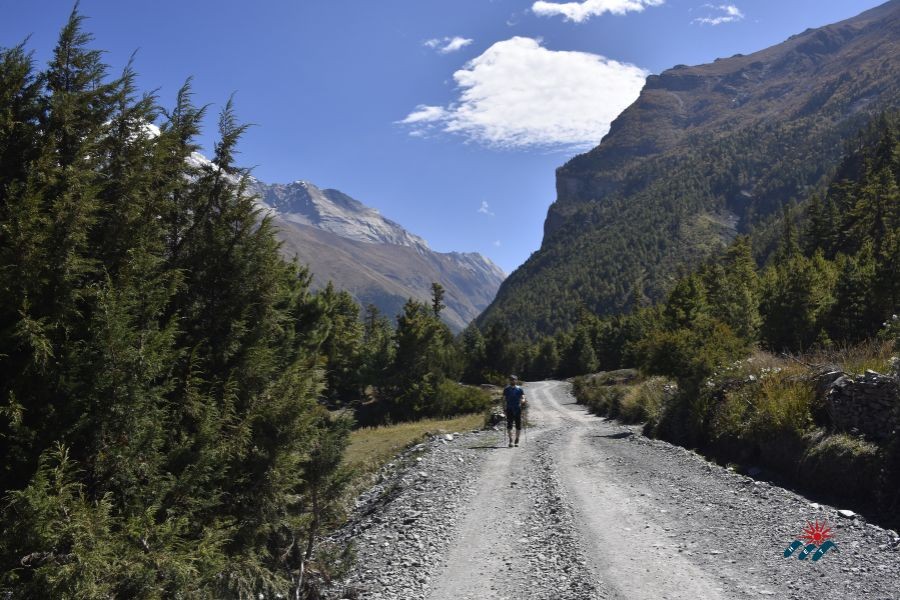
The air has that perfect crispness - cool enough to make trekking comfortable but not so cold as to be unpleasant. Morning frosts add sparkle to the landscape without creating dangerous trail conditions.
Autumn's Visual Spectacle
October transforms the Annapurna region into a kaleidoscope of colors:
Forest transformations:
Agricultural landscapes:
Mountain vistas:
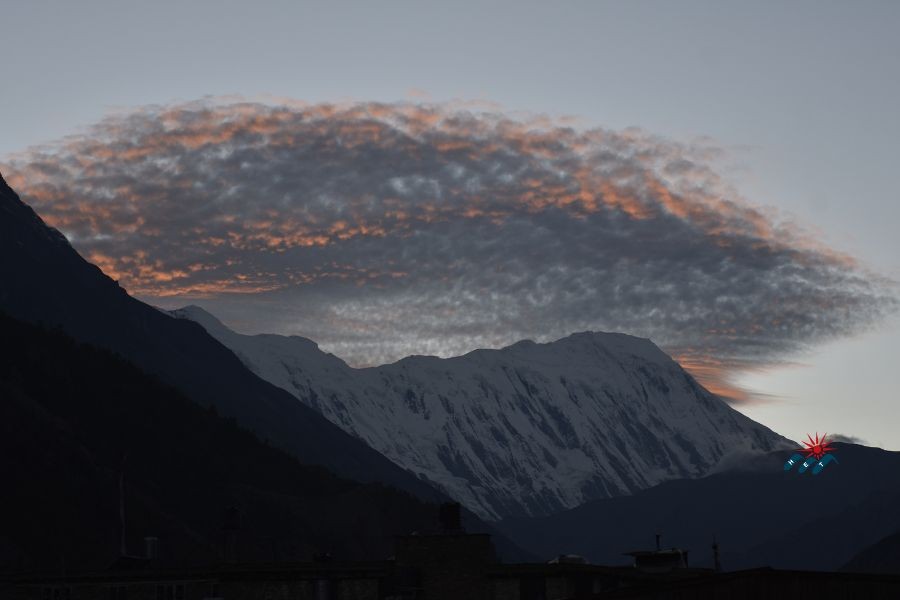
Festival Season in Full Swing
October coincides with Nepal's most important festivals:
Dashain (15-day festival)
Family gatherings and feasts
Temple ceremonies and animal sacrifices
Kite flying competitions in villages
Tihar (5-day festival)
Homes decorated with oil lamps and rangoli designs
Special pujas (worship ceremonies) at local monasteries
Brothers honored by their sisters in the Bhai Tika ceremony
These celebrations create unparalleled cultural immersion opportunities along the trekking route.
Trail Logistics in October
Being peak season, October requires some additional planning:
Teahouse availability: Book ahead for popular stops like Manang
Trail traffic: Expect company on main routes (consider alternative paths)
Thorong La crossings: More crowded but extremely well-organized
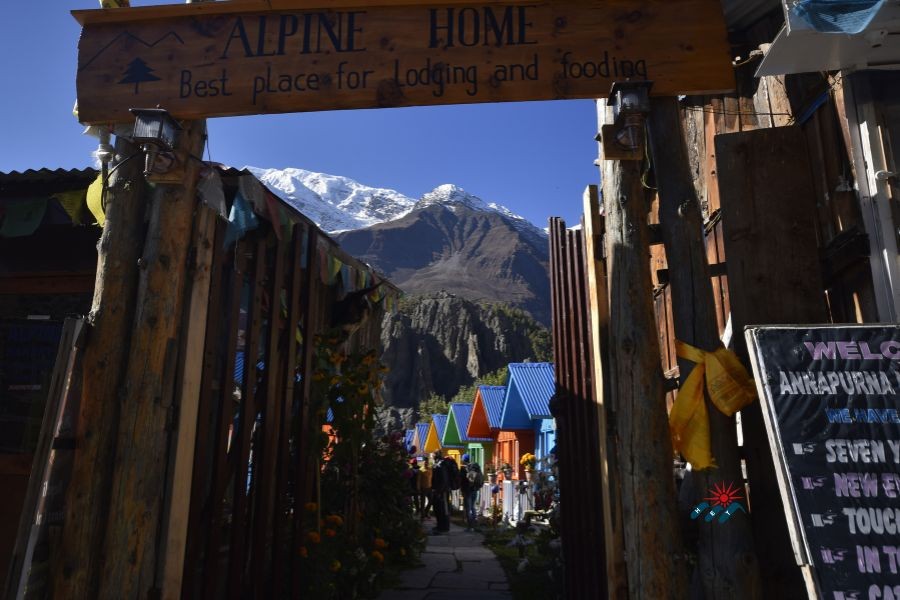
Annapurna Circuit Trek in November: The Quiet Grand Finale of Autumn
Weather Transition
November represents the bridge between autumn and winter:
Early November: Similar to October, but cooler nights
Late November: Noticeable temperature drop, especially at altitude
Daytime highs: 8-15°C (lower elevations), often colder higher up
Nighttime lows: Frequently below freezing at all elevations above 3,000m

Precipitation remains rare, but you might encounter early snowfall at higher elevations. Mornings often start with frost that melts by mid-morning.
Why November is Special
Solitude:
The crowds have dissipated
Many teahouses are still open, but quieter
More personal interactions with locals
Dramatic landscapes:
Snow begins dusting the high peaks
Golden lower valleys contrast with white summits
Crystal-clear air for photography
Cultural authenticity:
Post-festival village life returns to normal
Better opportunities for meaningful exchanges
Observe winter preparation activities
Trail Conditions and Considerations
Upper mountain passes: May have snow accumulation later in the month
Daylight hours: Shorter - need to start trekking earlier
Teahouse availability: Some higher elevation ones may close in late November
Gear requirements: Need warmer clothing than earlier in the autumn
Hidden Gems: Beyond the Classic Circuit
This remote extension adds 4-5 days but rewards with:
Ancient Tibetan villages frozen in time
Dramatic canyon landscapes, unlike anywhere else in Annapurna
Kang La Pass (5,306m) - one of the most spectacular crossings
Blue sheep and snow leopard spotting opportunities
Best visited in September-early October before winter snows block access.
Tilicho Lake: To the Roof of the World
This high-altitude detour features:
One of the world's highest lakes at 4,919m
Spiritual significance for Hindu and Buddhist pilgrims
Challenging approach via one of Nepal's highest trails
Mesokanto La option for experienced trekkers
Upper Pisang Alternative Route
Avoid the crowded lower trail by taking the high route past:
Ghyaru village with its unbeatable Annapurna views
Ngawal's ancient monasteries
Braga's famous gompa with its antique Buddhist artifacts
Essential Planning Tips for Autumn Trekking
Permits and Logistics
ACAP permit: Required for the entire circuit
TIMS card: Necessary for independent trekkers
Route planning: Account for festival dates if wanting to participate
Clothing essentials:
A layering system for variable temperatures
Quality down jacket for high passes
Waterproof shell (for occasional showers)
Special gear:
Health and Safety
Altitude awareness: Proper acclimatization schedule
Water purification: A Reliable system as streams reduce post-monsoon
Foot care: Quality boots broken in before trek
Conclusion: Autumn's Unmatched Allure
The Annapurna Circuit in autumn represents Himalayan trekking at its absolute finest. Whether you choose:
September's lush post-monsoon landscapes
October's perfect weather and festival energy
November's peaceful solitude and dramatic vistas
Each autumn month offers its own unique magic while delivering the core benefits of stable weather, incredible visibility, and rich cultural encounters.
For those seeking to maximize their experience, combining the classic circuit with hidden routes like Nar-Phu or Tilicho Lake creates a truly epic journey that showcases the Annapurna region's full diversity.
As you plan your adventure, remember that autumn's popularity means advance preparations are wise - from booking teahouses in peak season to securing necessary permits. But the effort will be rewarded with what many consider the definitive version of one of the world's great treks. Inquire Now: [email protected], Online Briefing: WhatsApp: +977 9851006023 (Bikesh)
